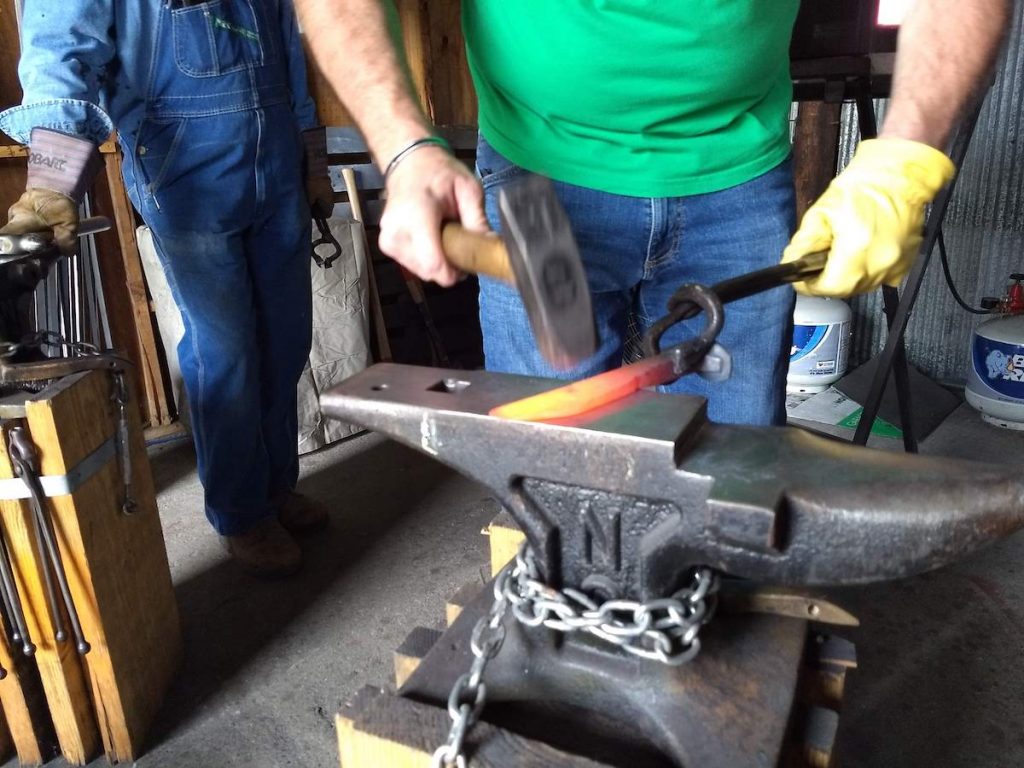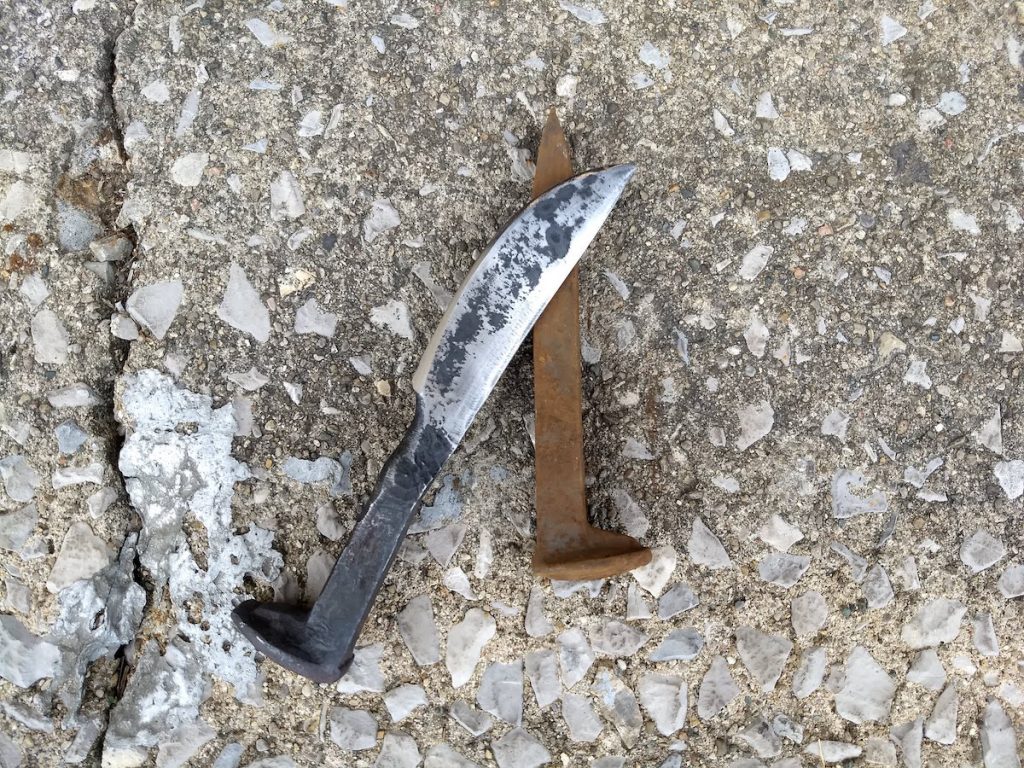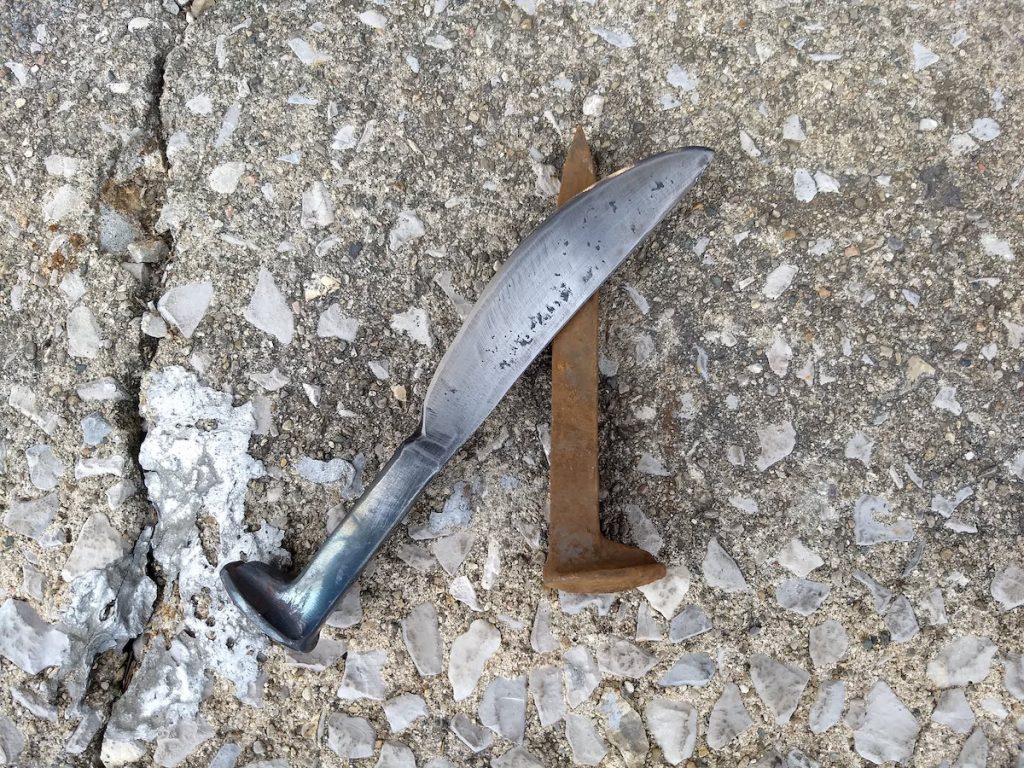We had a great knife making class today at Brown County Forge.
Bill and Terry spent 4 hours hammering out their knives on the shop’s two anvils.

They both did a great job of picking up the fundamentals of knife making:
- Hammer and tong control
- Heat management
- Grinding
- Shaping
- Polishing
- Hardening and Tempering (Heat Treating)
- Hand Sharpening
They each had the benefit of taking a Brown County Forge class in the past:
- Bill took the online course and started creating projects at home before coming to class.
- Terry took the Blacksmithing 101 Class on-site at the shop.
That said, there is no prior experience required for knife class.
What is Knife Class at Brown County Forge Like?

Class starts with an overview of the entire process:
- What to expect when you’re forging.
- What techniques you will learn.
- When heat treating happens and what it looks like.
- Safety issues to pay attention to.
- And best practices for forging a solid first knife.
The blacksmithing instructor Terran Marks lays out everything before demonstrating each step of the process.
As he demonstrates he explains the “why” and the “how” of each step.
He then coaches each student through creating their own knife.
If you’ve ever wondered…
- How Hardening and Tempering work.
- What it’s like to use a hammer and anvil to forge something.
- How to sharpen steel with a hand file.
- Exactly how hot a forge should be for different types of blacksmithing.
- How inexpensive it is to start blacksmithing.
It’s all covered in class!

When Are Knife Classes Held?
For 2021, Knife Classes will be held on Thursdays and Saturdays. All open class dates are available on the Brown County Forge Classes Page.
Knife class lasts 4 hours total and usually starts at 2 PM Eastern.
Students are welcome to arrive a few minutes early (ideally 1:55 PM) to go over the shop liability waiver.
Is There An Age Limit?
Yes, for safety reasons the age cut-off for all classes at Brown County Forge is 14 years old.
Since January of 2016 the shop has welcomed people ranging in age from 14 to 80+.
From couples in their mid-Twenties to Father-Son teams out for a fun weekend, everybody is welcome.
Want to Learn More?
Here are some helpful links to more resources and information:
Classes: https://browncountyforge.com/classes
Blog: https://browncountyforge.com/blog
Blacksmith Starter Kit: https://browncountyforge.com/blacksmith-starter-kit
Online Blacksmithing Course: https://diyblacksmithing.teachable.com